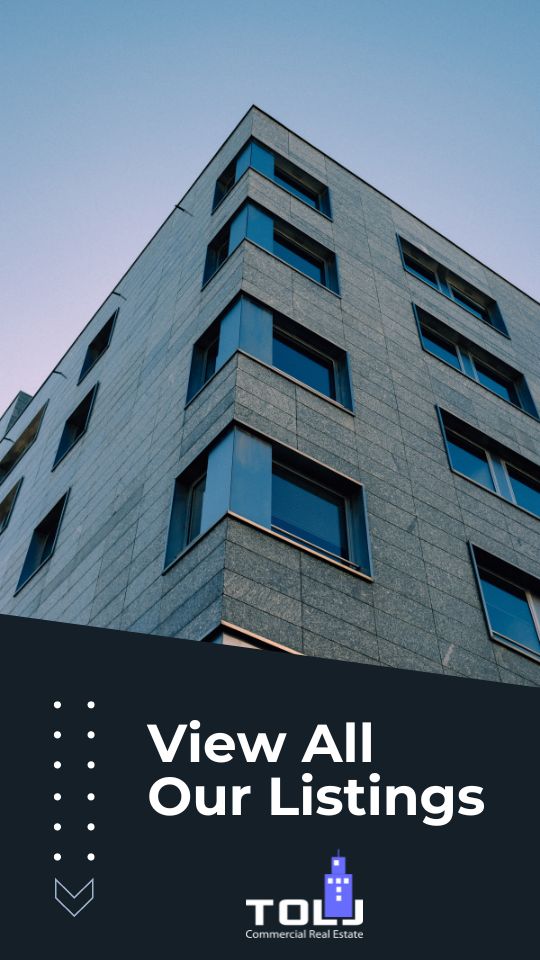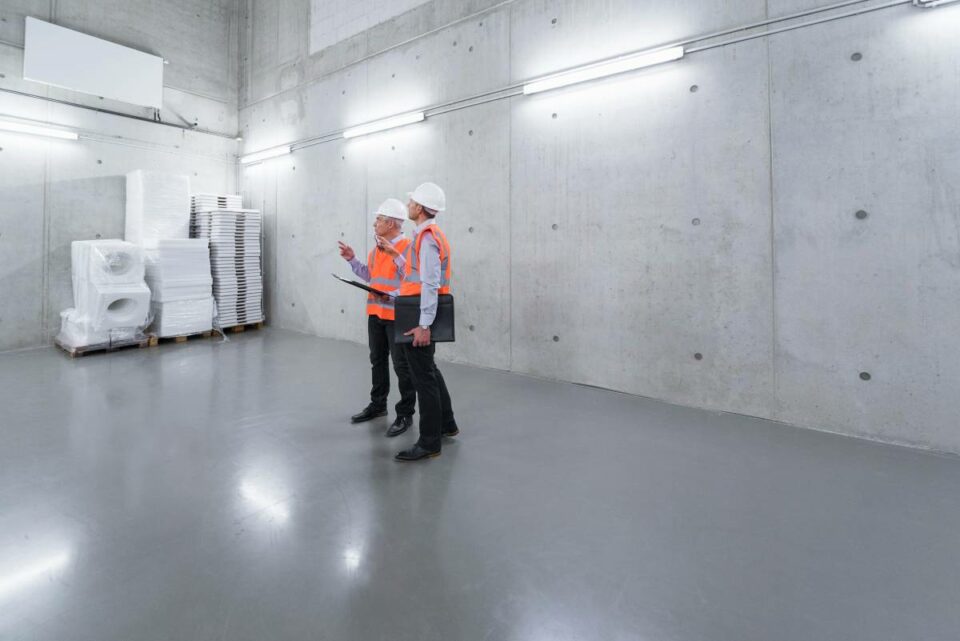The Los Angeles rental market continues to evolve rapidly in 2026, presenting both challenges and opportunities for property owners and investors. Whether you’re managing RSO-protected units or navigating state-level protections, this comprehensive guide will equip you with the knowledge and strategies needed to thrive in today’s regulatory environment.
Key Takeaways
- Current RSO caps limit rent increases to 4% annually for properties built before 1978 With an additional 1% allowed for gas/electric utilities included in rent, property owners must navigate the complexities of rent control laws.
- AB 1482 state law restricts increases to 5% plus CPI (maximum 10% total) For most properties not covered by local rent stabilization ordinances, landlords must stay informed about applicable rent control laws.
- Strategic compliance and tenant relationship management are essential for maximizing returns while avoiding costly violations and legal disputes
Understanding the Comprehensive Rent Control Landscape
Los Angeles Rent Stabilization Ordinance Framework
The RSO remains the cornerstone of LA’s rent control framework, affecting approximately 640,000 rental units across the city and representing one of the most extensive local rent control systems in the United States. Generally, the RSO applies to rental properties that were first built on or before October 1, 1978, including apartments, condominiums, certain single-family properties, mobilehomes, and recreational vehicles in mobile home parks.
Current RSO Provisions for 2026
The 2026 RSO framework establishes specific parameters for allowable rent increases that property owners must understand and implement correctly. The base increase limitation stands at 4% annually for all covered rental units, calculated using Consumer Price Index methodology that provides predictable adjustment mechanisms while protecting tenant affordability.
Property owners can add utility service allowances of 1% for gas services and an additional 1% for electric services when these utilities are provided by the landlord, creating a potential maximum aggregate increase of 6% total when both gas and electric utilities are landlord-provided.
Temporal restrictions require that RSO rent increases are permitted only once every 12 months, with strict timing requirements that property owners must track carefully to avoid violations. All RSO properties must maintain current registration with the Los Angeles Housing Department, including mandatory posting of RSO status and annual registration with specific tenant notification procedures that ensure transparency and compliance.
Property Types Under RSO Coverage
The rent stabilization ordinance covers a broad range of property types that extend beyond traditional apartment buildings. Rental properties first built on or before October 1, 1978, automatically fall under RSO coverage, as do replacement units under LAMC Section 151.28 that maintain the same regulatory status as original structures. Hotels, motels, rooming houses, and boarding houses become subject to RSO protections when occupied by the same tenant for more than 30 consecutive days, creating potential compliance obligations for property owners in the hospitality sector.
Residential units attached to commercial buildings represent another category of RSO coverage that requires careful consideration for mixed-use property owners. Junior Accessory Dwelling Units (JADU) fall under the ordinance regardless of their construction date when attached to RSO-covered primary residences. Mobilehomes and recreational vehicles in mobile home parks maintain RSO protection, creating specialized compliance requirements for park operators and space renters.
Statewide Rent Control Under Assembly Bill 1482
For properties not covered by local rent control ordinances, California’s Tenant Protection Act (AB 1482) provides statewide limitations that have fundamentally transformed the rental housing landscape across the state. This legislation limits annual rent increases to no more than 5% plus the local Consumer Price Index change, with a maximum cap of 10% regardless of inflation rates. As of August 2024, the maximum allowable annual rent increase in the Los Angeles metropolitan area is restricted to 8.9%, calculated as 5% base plus the regional CPI increase of 3.9%.
AB 1482 Coverage and Application
Assembly Bill 1482 applies to residential properties 15 years or older from the date of initial construction, creating a rolling timeline that brings more properties under state rent control each year. Buildings containing two or more rental units under single ownership fall under this protection, as do single-family homes owned by corporations, Real Estate Investment Trusts (REITs), or limited liability companies. Condominiums owned by corporate entities or investment funds also receive AB 1482 protections, regardless of their previous exemption status under local ordinances.
The legislation specifically targets institutional ownership while providing exemptions for individual property owners who maintain smaller portfolios. New construction properties less than 15 years old from the initial certificate of occupancy remain exempt, encouraging continued development and investment in housing supply while complying with rent control laws. Owner-occupied duplexes where the owner maintains primary residence in one unit continue to operate under market-rate conditions, preserving incentives for small-scale property ownership.
Exemptions and Special Considerations
Single-family homes and condominiums owned by natural persons (individual human beings) who own four or fewer properties statewide maintain exemption from AB 1482, though they may still be subject to local rent control ordinances depending on construction date and location. Deed-restricted affordable housing units operate under separate regulatory oversight that typically provides more comprehensive rent limitations and tenant protections. Student housing operated by educational institutions maintains specialized exemption status, though this requires careful documentation and compliance with institutional housing regulations.
Los Angeles County Rent Stabilization Programs
Beyond city limits, Los Angeles County operates comprehensive rent stabilization programs affecting unincorporated areas throughout the region. The Los Angeles County Rent Stabilization and Tenant Protections Ordinance (RSTPO) limits annual rent increases based on Consumer Price Index changes, with a current 4% maximum cap extended through December 31, 2024. This county-level protection ensures that tenants in unincorporated areas receive similar protections to those in the city of Los Angeles, creating regional consistency in rental housing regulations and enhancing housing affordability.
The county’s Mobilehome Rent Stabilization and Mobilehome Owner Protections Ordinance (MRSMOPO) provides specialized protections for mobilehome park spaces, recognizing the unique challenges faced by mobilehome owners who rent the land beneath their homes. These regulations establish fair return provisions for park owners while protecting mobilehome residents from excessive space rent increases that could force displacement from communities where they have significant financial investments in their homes.
Advanced Strategic Compliance Framework
Comprehensive Property Classification and Legal Documentation
The foundation of effective rent control navigation involves accurately determining which specific regulations apply to each property in your portfolio, understanding the intersections between different legal frameworks, and maintaining comprehensive documentation systems. Property classification errors can result in significant financial penalties, legal disputes, and potential criminal liability for willful violations.
Essential Documentation Systems
Original building permits and certificates of occupancy with construction completion dates provide the fundamental evidence needed to determine RSO eligibility and compliance obligations. Chain of title documentation establishing ownership history and corporate structure becomes critical for AB 1482 applicability, particularly when distinguishing between individual and corporate ownership. Previous rent control determinations and administrative rulings create precedential records that can affect ongoing compliance obligations and available remedies.
Utility service arrangements and inclusion documentation in lease agreements determine whether additional percentage increases for gas and electric services can be legally implemented. Tenant lease agreements, addendums, and all modification documents must reflect current rent control obligations and include required disclosure language. Annual registration compliance records with relevant housing authorities demonstrate ongoing good faith compliance and can provide protection against certain types of violations.
Advanced Property Assessment Protocols
Professional legal review of property classification becomes essential for complex ownership structures that may affect regulatory status under different rent control laws. Title company analysis for corporate versus individual ownership determination ensures accurate application of AB 1482 exemptions and compliance requirements. Construction date verification through multiple documentary sources prevents costly errors in determining RSO applicability and increase limitations.
Utility inclusion analysis and cost allocation studies support proper implementation of utility allowances while ensuring compliance with rent increase limitations. Tenant lease audits for compliance with disclosure requirements identify potential violations before they result in penalties or legal disputes.
Sophisticated Rent Increase Implementation Strategies
Proper notice procedures represent critical compliance requirements that extend far beyond simple timing considerations, encompassing specific content requirements, service methodologies, and documentation protocols. State law mandates landlords provide advance written notice periods that vary based on increase amounts: 30-day advance notice for rent increases below 10%, and 60-day advance notice for increases of 10% or above.
Comprehensive Notice Requirements Framework
Written format requirements with specific statutory language vary between property types and regulatory frameworks, requiring careful attention to detail and professional preparation. RSO-specific notice content must include tenant rights information and contact details for the housing department, ensuring tenants understand their protections and available resources. Proper legal service methods include personal delivery, certified mail with return receipt, and posting procedures that create legally sufficient evidence of notice delivery.
Mandatory inclusion of tenant protection information and resources demonstrates good faith compliance while providing tenants with access to assistance and advocacy services. Filing requirements with the Los Angeles Housing Department for RSO properties must be completed within specified timeframes to avoid penalties and ensure notice validity for allowable rent increases. Translation requirements for non-English speaking tenants ensure equal access to important tenancy information and legal protections.
Advanced Timing Strategy Considerations
Coordination with lease renewal cycles optimizes cash flow timing while maintaining positive tenant relationships and minimizing turnover costs. Market condition analysis for optimal increase implementation timing considers factors such as seasonal rental demand, local economic conditions, and competitive rental rates. Tenant retention cost-benefit analysis before implementing maximum allowable increases evaluates whether smaller increases might generate better long-term returns through reduced turnover and maintenance costs.
Portfolio-wide increase scheduling manages administrative workload and tenant relations by avoiding overwhelming property management staff or creating concentrated tenant concerns. Integration with capital improvement projects and value-enhancement initiatives can justify increases while providing tangible benefits to tenants and property values.
Comprehensive Eviction Protection Compliance
Modern rent control frameworks extend comprehensive protections beyond rent increase limitations to include sophisticated just-cause eviction requirements, mandatory relocation assistance programs, and anti-harassment provisions. Effective January 27, 2023, any written notice terminating a tenancy for tenant at-fault legal reasons must be filed with the Los Angeles Housing Department within three business days of service on the tenant.
Just Cause Eviction Requirements
At-fault evictions require documentation of specific tenant violations including non-payment of rent above fair market rent thresholds, material lease violations, nuisance behavior, illegal subletting, and tenant refusal of access for necessary repairs. Each category has specific procedural requirements and documentation standards that landlords must meet to ensure legal validity. Non-payment evictions face particular scrutiny under new threshold requirements that prevent evictions for small amounts owed, requiring careful calculation of fair market rent standards.
No-fault evictions encompass owner occupancy with family member residency requirements, substantial renovation requiring temporary vacation, permanent withdrawal from rental market, demolition with proper permits, and government agency orders. These evictions typically require substantial relocation assistance payments that can range from several thousand to tens of thousands of dollars depending on unit size, tenant demographics, and length of tenancy. Administrative filing procedures mandate documentation submission to housing authorities with specific timelines and content requirements that vary by jurisdiction and eviction type.
Anti-Harassment and Tenant Protection Protocols
Comprehensive staff training on prohibited harassment behaviors and proper tenant interaction protocols ensures that all property management personnel understand legal boundaries and professional standards. Documentation systems for all tenant communications and service requests create protective records while demonstrating responsive property management. Maintenance response procedures that comply with habitability requirements prevent violations while maintaining positive tenant relationships.
Proper procedures for property access and inspection scheduling respect tenant privacy rights while allowing necessary property management activities. Integration of fair housing compliance with rent control obligations ensures comprehensive legal compliance that addresses overlapping regulatory requirements.

Advanced Return Optimization Within Legal Constraints
Value-Enhancement Strategies for Rent-Controlled Properties
While rent control regulations limit annual increase percentages, strategic property improvements and operational optimizations can justify additional rent adjustments through administrative petition processes, enhance property values, and improve tenant retention rates. These strategies require a sophisticated understanding of cost-benefit analysis, regulatory approval processes, and long-term investment planning to navigate allowable rent hikes effectively.
Capital Improvement Investment Strategies
Energy efficiency retrofits including solar panel installations, LED lighting conversions, high-efficiency HVAC systems, and smart building automation qualify for utility rebates and tax incentives while providing grounds for capital improvement petitions. These improvements reduce operating costs for both landlords and tenants while generating positive environmental impact and community relations. Seismic safety upgrades through structural reinforcement projects enhance property values while qualifying for special rent increase petitions that recognize the substantial investment required for earthquake safety compliance.
Accessibility compliance improvements through ADA-compliant modifications expand tenant demographics while generating positive community relations and potential tax benefits. These improvements often qualify for grants and incentive programs that offset implementation costs while providing long-term value enhancement. Major building system replacements including plumbing, electrical, and roofing improvements extend property life and justify rent adjustments while reducing ongoing maintenance costs and emergency repair expenses.
Technology infrastructure upgrades such as high-speed internet installations, smart home features, and security system enhancements command premium rents while improving tenant satisfaction and retention rates. These improvements often provide immediate competitive advantages in the rental market while supporting higher property valuations.
Operational Excellence Initiatives
Professional property management implementation through third-party management companies with specialized rent control expertise and tenant relations capabilities can improve property performance while ensuring compliance with complex regulatory requirements. Experienced property managers understand the nuances of rent control compliance while implementing best practices for tenant retention and property maintenance.
Preventive maintenance scheduling through systematic maintenance programs reduces emergency repairs while maintaining property conditions that support tenant satisfaction and retention. Regular maintenance prevents small problems from becoming major expenses while demonstrating responsible property stewardship to tenants and regulatory authorities.
Tenant retention programs including amenity improvements, community events, and responsive service reduce turnover costs that can significantly impact property profitability. High-quality tenant retention often provides better returns than maximum rent increases, particularly in rent-controlled properties where finding replacement tenants at market rates may be impossible.
Strategic Portfolio Diversification and Risk Management
Sophisticated real estate investors in 2026 are implementing comprehensive portfolio strategies that balance rent-controlled properties with market-rate opportunities, geographic diversification, and property type variation. With commercial real estate showing signs of recovery as interest rates decline and investor confidence returns, strategic positioning across multiple asset classes provides both stability and growth potential.
Advanced Portfolio Composition Strategies
Geographic diversification across different municipalities with varying rent control regulations and market dynamics reduces regulatory risk while providing exposure to different economic conditions and growth patterns. Properties in areas with less restrictive rent control can balance those in heavily regulated markets, creating portfolio stability and flexibility.
Property age stratification through balanced mix of pre-1978 RSO properties, post-1978 AB 1482 covered properties, and newer construction exempt properties provides different risk and return profiles within a single portfolio. Newer properties offer market-rate pricing potential while older properties provide stable cash flow and potential value-add opportunities through strategic improvements.
Asset class diversification combining residential rental properties with commercial real estate, industrial properties, and mixed-use developments spreads risk across different market sectors while providing various revenue streams and growth opportunities. Commercial properties often offer higher returns and greater operational flexibility than heavily regulated residential properties, which are subject to strict rent control policies.
Market positioning variety through luxury market-rate properties, workforce housing, and affordable housing with different regulatory frameworks allows investors to serve different tenant demographics while navigating various regulatory environments. This diversification provides stability during economic cycles and regulatory changes.
Risk Mitigation and Insurance Strategies
Comprehensive landlord insurance covering regulatory compliance violations, legal defense costs, and loss of rent during disputes provides financial protection against the complexities of rent control compliance. Specialized insurance products recognize the unique risks associated with regulated rental housing and provide appropriate coverage levels.
Legal reserve fund establishment through dedicated capital for compliance upgrades, legal consultation, and potential violation penalties ensures financial preparedness for regulatory challenges. Professional service teams including relationships with specialized attorneys, accountants, and property management firms with rent control expertise provide ongoing support and guidance for complex compliance issues.
Technology investment in property management software with built-in compliance tracking and automated notification systems reduces human error while ensuring timely compliance with various regulatory requirements. Modern technology solutions can manage complex regulatory frameworks more effectively than manual systems.
Advanced Tenant Relations and Risk Management
Sophisticated Harassment Prevention and Legal Compliance
The Los Angeles City Council’s adoption of the Tenant Anti-Harassment Ordinance (TAHO) creates comprehensive prohibitions against landlord harassment behaviors while establishing significant penalties for violations. The ordinance applies to ALL residential units in the City of Los Angeles, regardless of rent control status, and requires proactive compliance measures rather than reactive responses to complaints.
Comprehensive Harassment Prevention Protocols
Detailed staff training programs providing regular education on prohibited behaviors, proper communication techniques, and documentation requirements for all property management personnel ensure consistent professional conduct. Training must address both obvious harassment behaviors and subtle actions that could be interpreted as intimidation or retaliation.
Clear communication standards through written protocols for tenant interactions, service request responses, and conflict resolution procedures establish professional boundaries while ensuring responsive property management. Systematic documentation practices maintaining complete records of all tenant interactions, maintenance requests, and property access instances provide protection against false allegations while demonstrating good faith business practices.
Regular policy review and updates through quarterly assessment of procedures and compliance with evolving regulations ensures ongoing compliance as laws and interpretations change. Tenant feedback systems through formal channels for tenant concerns and suggestions demonstrate responsiveness and prevent escalation of minor issues into major disputes.
Retaliation Prevention Strategies
Protected activity recognition requires understanding tenant rights to file complaints, join tenant organizations, and exercise legal protections without fear of retaliation. Timing documentation through careful records demonstrating legitimate business reasons for any adverse actions following tenant complaints provides protection against retaliation claims, ensuring compliance with rent control policies.
Third-party mediation through professional conflict resolution services for disputes before they escalate to legal proceedings can resolve issues while maintaining relationships and avoiding costly litigation. Proactive communication through regular tenant surveys and community meetings addresses concerns before they become formal complaints or legal disputes.
Advanced Security Deposit Management and Financial Compliance
Recent regulatory changes to security deposit requirements demand updated procedures and sophisticated financial management systems. From July 1, 2024, all security deposits in Los Angeles are limited to one month’s rent, with specific return timelines and interest payment obligations for long-term tenancies under RSO properties.
Comprehensive Security Deposit Protocols
Detailed move-in inspection procedures through professional documentation with photographic evidence, tenant participation, and written acknowledgment establish baseline conditions that protect both landlords and tenants. Systematic move-out assessments using standardized evaluation criteria for normal wear and tear versus tenant damage ensure fair and consistent treatment while protecting legitimate landlord interests.
Itemized accounting systems providing detailed breakdown of any deductions with supporting documentation and repair estimates demonstrate transparency while complying with legal requirements. Interest calculation compliance through automated systems for RSO properties requiring security deposit interest payments ensures accurate calculations and timely payments.
Timely return procedures meeting the 21-day return timeline with proper notice and documentation for any withholdings prevent violations while maintaining positive tenant relationships even at the end of tenancies.
Financial Management Best Practices
Separate account maintenance through dedicated trust accounts for security deposit funds separate from operating accounts ensures compliance with fiduciary obligations while protecting tenant funds. Regular reconciliation procedures through monthly audits of security deposit accounts and interest accrual calculations identify discrepancies before they become violations.
Professional accounting integration through coordination with certified public accountants for proper tax treatment and compliance reporting ensures comprehensive financial management. Technology solutions through property management software with integrated security deposit tracking and automated compliance notifications reduce human error while ensuring timely compliance.
Commercial Real Estate Opportunities and Market Positioning
Strategic Market Positioning in the 2026 Los Angeles Commercial Sector
The commercial real estate sector presents attractive alternatives for investors seeking market-rate returns and operational flexibility. Recent market analysis indicates that while cap rates rose and transaction volumes declined through 2024 due to elevated interest rates and economic uncertainty, industry experts anticipate significant rebound in real estate sales as interest rates decline substantially in the following years.
Emerging Commercial Sector Opportunities
Industrial and logistics properties continue expansion driven by e-commerce growth and port activity at Los Angeles and Long Beach, creating substantial investment opportunities in warehouse and distribution facilities. Medical and healthcare real estate shows growing demand for specialized medical facilities and outpatient services as the population ages and healthcare delivery evolves.
Mixed-use developments integrating residential, retail, and office components with reduced regulatory complexity offer diversified revenue streams while balancing tenant protections and meeting evolving urban planning preferences. Adaptive reuse projects converting underutilized office and industrial properties to alternative uses provide value-add opportunities in established locations with existing infrastructure.
Technology and innovation spaces offering flexible workspace solutions for growing technology and creative industries respond to changing work patterns while commanding premium rents in desirable locations.
Comparative Regulatory Advantages
Market-rate pricing flexibility allows adjustment of rents based on market conditions without residential rent control limitations, providing greater responsiveness to economic cycles and market opportunities. Professional tenant relationships in commercial properties typically understand market dynamics and negotiate based on business considerations rather than emotional factors.
Shorter lease terms provide opportunity for regular rent adjustments and tenant improvements without long-term rent control restrictions that limit flexibility. Lower compliance burden compared to residential rent control properties reduces administrative costs while simplifying property management requirements.
Value-add potential through greater flexibility for property improvements and repositioning strategies allows creative approaches to maximizing property value and returns.
Investment Strategy Integration and Capital Allocation
Successful real estate investors in 2026 will implement sophisticated capital allocation strategies that balance the stability of rent-controlled residential properties with the growth potential of commercial real estate and market-rate residential developments. This approach requires comprehensive market analysis, financial modeling, and risk assessment capabilities.
Strategic Capital Allocation Framework
Core-satellite portfolio structure using stable rent-controlled properties as core holdings with commercial properties as growth-oriented satellite investments provides balanced risk and return profiles. Cash flow optimization through balancing predictable RSO rental income with higher-yield commercial property returns ensures stable operations while pursuing growth opportunities.
Development opportunity identification through land acquisition and entitlement strategies for new construction exempt from rent control creates long-term value while expanding portfolio diversification. Value creation through repositioning by acquisition of underperforming properties with improvement and management potential provides active investment opportunities.
Market cycle timing through strategic acquisition and disposition timing based on interest rate cycles and market conditions maximizes returns while managing risk exposure.
Technology Integration and Operational Excellence
Advanced Property Management Technology Systems
Modern property management in the rent control environment requires sophisticated technology solutions that ensure compliance with rent control policies while optimizing operational efficiency. The complexity of multiple regulatory frameworks, documentation requirements, and tenant communication obligations demands integrated software solutions with specialized capabilities.
Essential Technology Infrastructure
Comprehensive property management platforms with integrated systems handling rent calculations, increase notifications, compliance tracking, and financial reporting streamline operations while reducing compliance risks. Automated compliance monitoring through software that tracks regulatory changes, calculates allowable increases, and generates required notices eliminates human error in critical compliance functions.
Tenant communication portals providing professional platforms for maintenance requests, rent payments, and official notifications improve tenant satisfaction while creating documented communication records. Document management systems through secure cloud-based storage for leases, notices, inspection reports, and compliance documentation ensure organized record-keeping and easy access for regulatory compliance.
Financial analytics and reporting through advanced reporting capabilities for portfolio performance analysis and regulatory compliance reporting provide insights for strategic decision-making while ensuring regulatory compliance.
Conclusion
Navigating Los Angeles rent control in 2026 requires a sophisticated understanding of both regulatory requirements and market dynamics that extends far beyond simple compliance checklists. Success comes from treating compliance not as a burden, but as a framework for sustainable, profitable property ownership that balances investor returns with tenant protections. By implementing strategic compliance protocols, maintaining positive tenant relationships, and staying ahead of regulatory changes, property owners can thrive even within restrictive rent control environments.
The key lies in viewing these regulations as part of the investment landscape rather than obstacles to overcome, while recognizing that properties commanding premium pricing, maintaining high occupancy rates, and demonstrating strong cash flow do so because their owners have mastered the art of working within the system while maximizing every available opportunity. Strategic diversification across property types, geographic areas, and regulatory frameworks provides stability while positioning portfolios for long-term growth as market conditions evolve.
If you’re looking to optimize your Los Angeles property portfolio or need guidance on rent control compliance strategies, I’d welcome the opportunity to discuss how my experience in commercial real estate can help you achieve your investment goals. Feel free to reach out—I’m here to help you navigate these complex waters and build lasting success in one of the nation’s most dynamic real estate markets.
A Guide for Rent Control Properties: Essential Implementation Steps
Understanding Your Property’s Regulatory Status
Determining which rent control framework applies to your specific property requires careful analysis of construction dates, ownership structures, and local regulations. For comprehensive information, our detailed guide for rent control properties provides essential knowledge for property owners navigating complex regulatory requirements. The Los Angeles Housing Department’s ZIMAS portal provides initial RSO status information, but complex properties may require professional legal review to ensure accurate classification. Property owners must understand that misclassification can result in significant penalties and legal disputes, making professional guidance essential for portfolio management.
Negotiating Rent-Controlled Leases Effectively
Successful lease negotiations in rent-controlled environments require understanding both tenant protections and available landlord rights. Learning effective techniques for negotiating rent-controlled leases helps property owners optimize lease terms through strategic timing, comprehensive lease language, and professional tenant screening processes. The key lies in creating win-win situations that respect regulatory requirements while maximizing property performance and tenant satisfaction.
Rent Control Exposed: The Truth About Rate Increases
Maximum Allowable Increases Under Current Law
The reality of rent control rate increases reflects a complex interplay between local ordinances and state-level protections. Understanding effective rent control strategies helps property owners navigate these limitations while optimizing returns. RSO properties face 4% annual limits with utility allowances, while AB 1482 properties can see increases up to 8.9% in the current economic environment. Understanding these limitations helps property owners plan strategic rent adjustments that comply with law while optimizing revenue streams.
Timing and Implementation Strategies
Strategic timing of rent increases can significantly impact tenant retention and cash flow optimization. Property owners who coordinate increases with lease renewals, market conditions, and capital improvements often achieve better results than those who simply implement maximum allowable increases annually. The most successful strategies balance regulatory compliance with relationship management and long-term property positioning.
How Rent Control Shapes the Future of Small Businesses
Commercial Tenant Protections and Implications
While residential rent control receives primary attention, commercial properties also face regulatory pressures that affect small business tenants. Understanding rent control on small business growth helps property owners develop tenant-friendly approaches while maintaining profitable operations. Smart commercial property management considers tenant business success as integral to long-term property value and stability. Smart commercial property management considers tenant business success as integral to long-term property value and stability.
Balancing Tenant Success with Property Performance
The most successful commercial property owners recognize that tenant business success directly correlates with property performance and value. Strategic lease structures, tenant improvement allowances, and flexible terms can create competitive advantages while ensuring compliance with applicable regulations. This approach builds lasting tenant relationships that reduce turnover costs and enhance property reputation in the marketplace.
FAQs
Can I increase rent by more than 4% on my RSO property if I make significant improvements?
What happens if I accidentally violate rent control regulations?
How do I determine if my single-family rental is subject to rent control?
Can I pass utility cost increases directly to tenants in RSO units?
What’s the best strategy for new investors entering the LA rental market?
Conclusion
LA’s rent control maze doesn’t have to be overwhelming. Think of these regulations as your roadmap, not roadblocks—they actually create predictable frameworks that smart property owners use to their advantage. The most successful investors I work with embrace compliance while finding creative ways to maximize returns and keep great tenants happy.
Ready to turn rent control into your competitive edge? Let’s chat about your portfolio goals. With over 20 years helping property owners navigate these exact challenges, I can show you strategies that work. Schedule a consultation with meI genuinely enjoy helping fellow investors succeed in this market while navigating the challenges posed by rent control policies.




